Explore the moves:
Easy Seat ⋅ 90-90 Stretch ⋅ Side Plank ⋅ Box Squat ⋅ Kneeling Get-Up ⋅ Shin Box Get-Up
For many of us, the phrase “physical-fitness test” probably evokes memories of doing an assortment of exercises — pushups, pull-ups, toe touches, a mile run — in school PE. But one test of fitness is often overlooked, especially as we age: the ability to sit down on the floor and stand back up again.
“It seems like a simple-enough challenge: Sit down on the floor and get back up without the help of your arms. The sit–stand test requires you to lower yourself to the floor, crisscross style, without bracing yourself with your hands, knees, or arms,” explains Rob Glick, Life Time senior director of group fitness programming and innovation. “If you can stand back up again without the aid of your arms or hands, you score a perfect 10 — five points for sitting, five points for standing. You lose a point every time you support yourself with your arms.”
Earning a perfect score is harder than it sounds.
Researchers in 1985 and 2014 studies discovered that the ability to sit down and stand up without any help from your hands, knees, or other supports — demonstrating a level of musculoskeletal fitness that requires flexibility, balance, coordination, strength, and power — was linked to a longer lifespan among the study participants.
“The sit–stand test helps to tell a part of a story that is important to pay attention to,” Glick says. Namely, that full-body strength and mobility can improve physical function and quality of life.
Whether you’re 20 or 40 or 80, it’s not too late to build physical strength and stamina. Glick recommends the following exercises:
- Squatting to a chair or box.
- Core-stability moves, such as plank variations.
- Mobility work that involves internal and external hip rotation.
Remember that the result of the sit–stand test isn’t fate. Rather, consider it a reminder to practice the skill of sitting and standing as well as you can for as long as you can.
“The best way to get better at anything is to keep practicing,” says Glick. “If you are persistent and tenacious, you will see progress quickly and find yourself getting down on the floor and up off the floor with ease.”
The Moves
Easy Seat
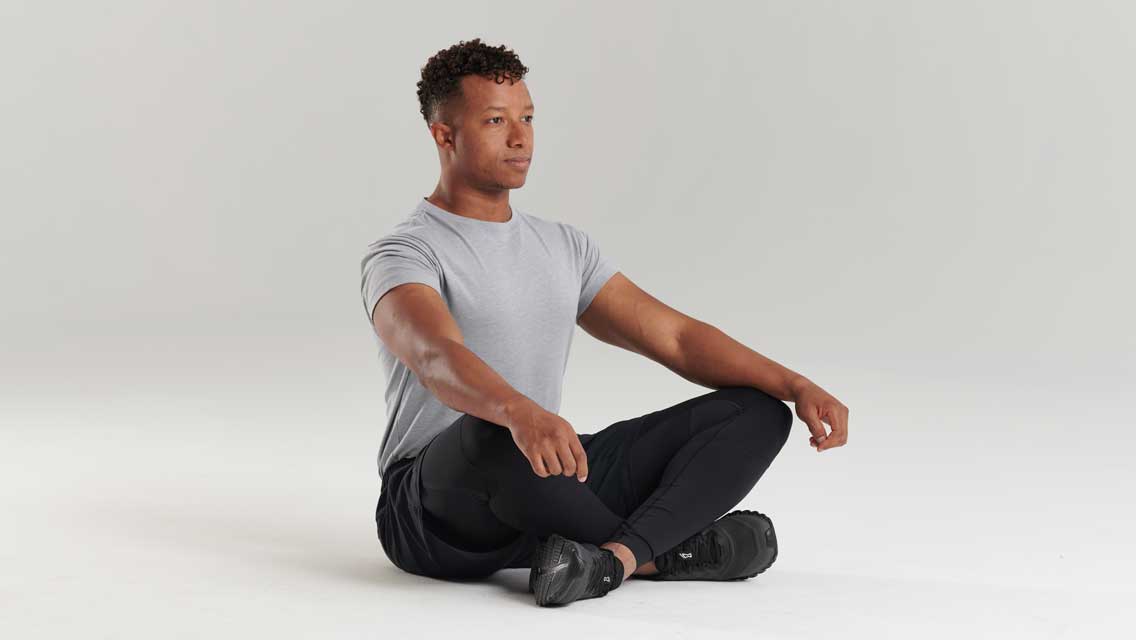
- Sit on the floor with your knees wide and legs crossed at the shins.
- Position each foot behind the opposite knee and set your pelvis in a neutral position.
- Sit tall and avoid arching or hunching your back.
- Stay in this position for 30 seconds, or as long as you can maintain a tall posture. Then switch the cross of your legs and repeat.
Make it easier: Despite its name, the easy seat can be a challenge. Make adjustments such as sitting with your back against a wall, sitting on a yoga block, and/or placing a rolled-up blanket or towel under your knees.
90-90 Stretch
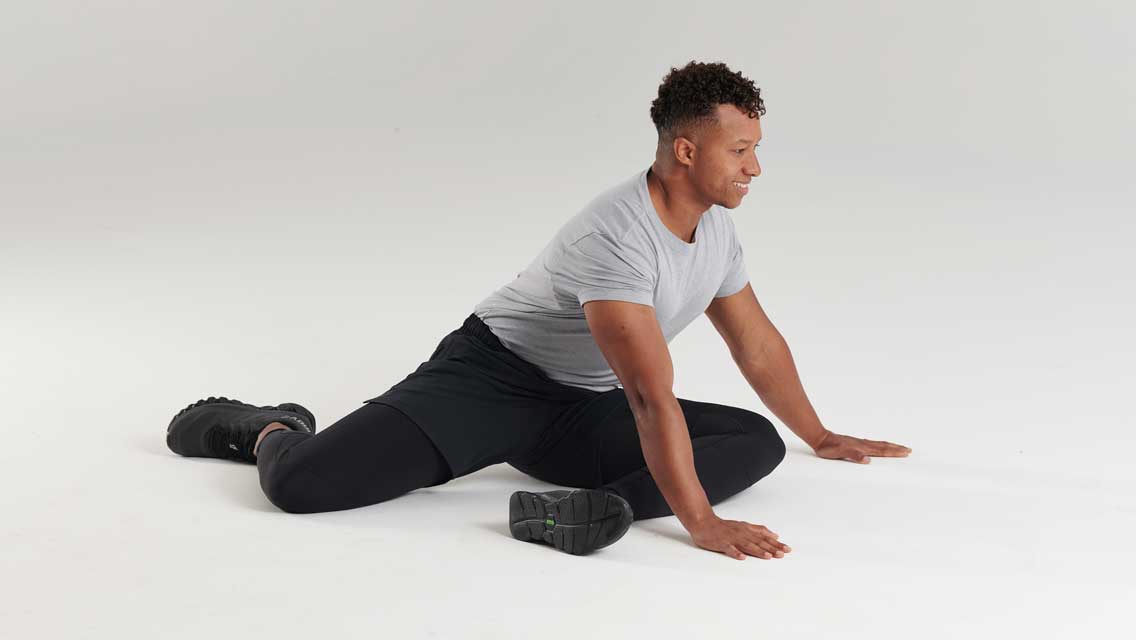
- Sit on the floor and position your legs in a pinwheel position: one leg in front of you and one leg to the side.
- Adjust your leg position so that your knees and ankles form 90-degree angles. Rotate your torso to square your shoulders with your front shin
- Using the hip muscles of your front leg, draw your front knee down toward the floor. Don’t force it; you may notice little to no movement in your knee, but you will likely feel engagement in your hips.
- You can deepen the stretch by leaning forward over your front shin. Take care to move with control, maintaining a long spine.
- Hold this position for 20 seconds to two minutes. Then switch sides and repeat with the opposite leg in the front position of the pinwheel.
Side Plank
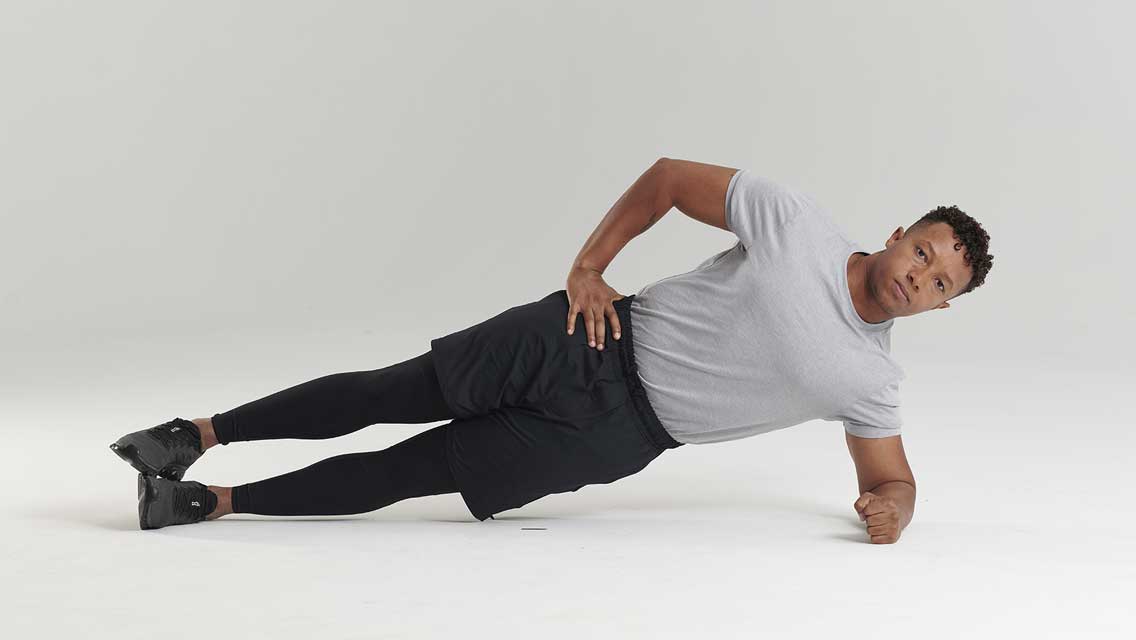
- Lie on your side and prop yourself up on that side’s forearm, stacking your shoulder over your elbow. Press through that arm to keep your shoulder away from your ear and maintain a long neck.
- Extend your legs. Stack your upper foot on top of the bottom one, if it’s comfortable, or stagger your feet so they are both on the floor.
- Press through your base arm and feet, and raise your body off the floor. Engage through your core and the muscles of your base arm and legs, keeping your hips elevated.
- Hold the position for three deep breaths (20 to 30 seconds). Relax, then repeat on your other side.
Make it easier: Drop the bottom knee to the floor for added support.
Make it harder: Raise and lower the top leg while maintaining great form. Perform 10 to 15 reps per side.
(For more on the side plank and its variations, visit “BREAK IT DOWN: The Side Plank“.)
Box Squat
- Holding a kettlebell at chest height, stand in front of a knee-high box or bench. Push your butt back and bend at the knees to lower into a squat until you feel the box behind you.
- Pause as you sit on the box — but don’t relax. Drive through your heels to stand. Keep an upright torso and don’t let your knees cave in.
- Squeeze your butt as you return to standing.
- Perform eight to 12 reps. Over time, lower the height of the box and keep progressing as you can sit closer and closer to the floor.
Make it easier: Ditch the weights and grab a chair. Start with the lowest chair you can sit upon and then stand back up. Repeat 10 to 12 times. Work on lower and lower chairs. Stop as soon as you notice form breaking (knees not tracking the same line as the feet, hunched upper back, pain or tenderness anywhere in the body). Repeat two to three times a week until the movement gets easier, then keep progressing closer to the floor.
Kneeling Get-Up
- With your hands interlaced behind your head and your feet parallel and slightly wider than shoulder width, slowly bend your knees and hips, squatting down until the tops of your thighs are parallel to the floor.
- From the squat position, step one foot behind you and place that knee on the floor. Repeat with the other foot so that you are in a tall kneeling position.
- Reverse the movement, stepping one foot up at a time to resume the squatting position.
- Without standing all the way up, repeat the squat-to-kneeling movement 20 times. Alternate the foot you lead with each time.
Shin Box Get-Up
- Sit with your knees up to your chest, feet slightly wider than hip width apart on the floor in front of you.
- Drop your knees to your right side and onto the floor; they should form a 90-degree angle with the shins. Focus on sitting tall in this posture.
- While maintaining an upright posture, push your shins and knees downward into the floor and squeeze your glutes to extend your hips and elevate your torso. Get as tall as possible, keeping the tailbone tucked.
- With control, swing your back foot forward and up to get into a half kneeling position, and then stand up.
- Lunge back and return to the seated position. Keep your shoulders over your hips and avoid plopping down to the floor by controlling the lower part of the range of motion. Repeat for five reps per side.
Make it easier: Eliminate the get-up to standing and focus on the extension portion of the move only.
Make it harder: Hold a kettlebell at chest height.
How Well Are You Aging? 3 More Health Markers
While the sit–stand test provides insight for some, it is not the be-all and end-all of fitness — no single test is. Neither is it accessible to everyone.
Thankfully, the ability to sit and stand without support isn’t the only health marker researchers are studying. Here are a handful of other fitness attributes that may be relevant for you.
1. Pushup Capacity: A 2019 study linked pushup capacity to a lower risk of heart disease. The study, which followed 1,104 middle-aged, active male firefighters over the span of 10 years, found that those who could complete 40 pushups in the baseline exam had a 96 percent lower risk of cardiovascular disease during the 10 years studied than those who could do fewer than 10 pushups. The results may not be generalizable to women or to men of other ages or who are less active, the study authors note. (For a form check on your pushups and tips to build your muscular endurance, check out “BREAK IT DOWN: The Pushup“.)
2. Walking Speed: A 2006 study concluded that regularly walking at a faster-than-average pace reduced the risk of death from cardiovascular disease by 53 percent for people 60 and older. The study also found that just walking at an average pace offered a 46 percent reduction in mortality risk for participants. (For details on refining your full-body walking stride, see “Relearn to Walk“; for a walking workout that adds strength to your speed, visit “How to Do a 30-Minute Walking Workout“.)
3. Grip Strength: A 2018 study found that an 11-pound decrease in grip strength, as measured by squeezing a hand dynamometer, was associated with a 16 percent (men) and 20 percent (women) increase in mortality from all causes. (For ideas to improve your grip strength see “How to Improve Your Grip” and “6 Tips to Build Grip Strength“.)
No matter which marker you consider, the message from researchers is the same: Move! Moving your body and finding the balance of strength, cardio, mobility, and coordination work that’s right for you is critical for aging well. (To learn more about staying fit for life, check out “Fit for Life: You’re Never Too Old to Get Moving“.)
This article originally appeared as “Get Up, Stand Up” in the January/February 2023 issue of Experience Life.
Learn More
Explore our carefully curated collection of articles that provide valuable information and tips to support you physically, mentally, and emotionally as you navigate the aging process.


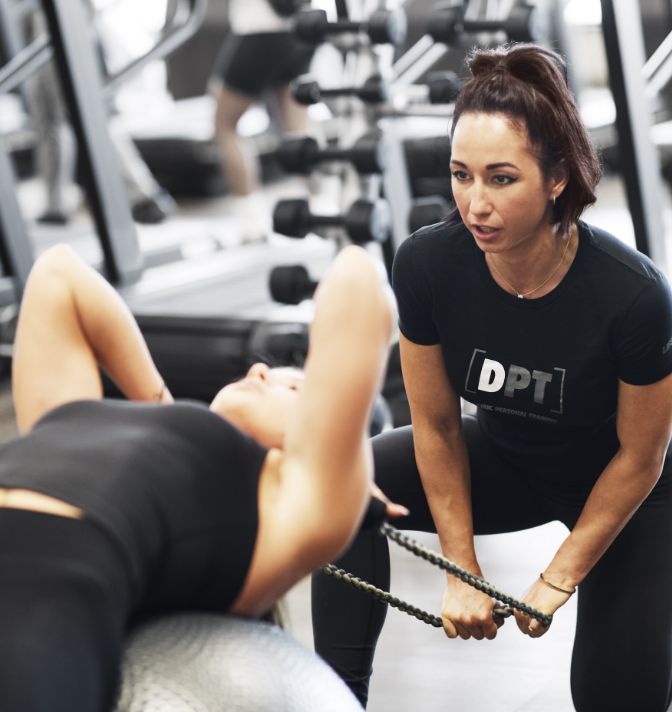
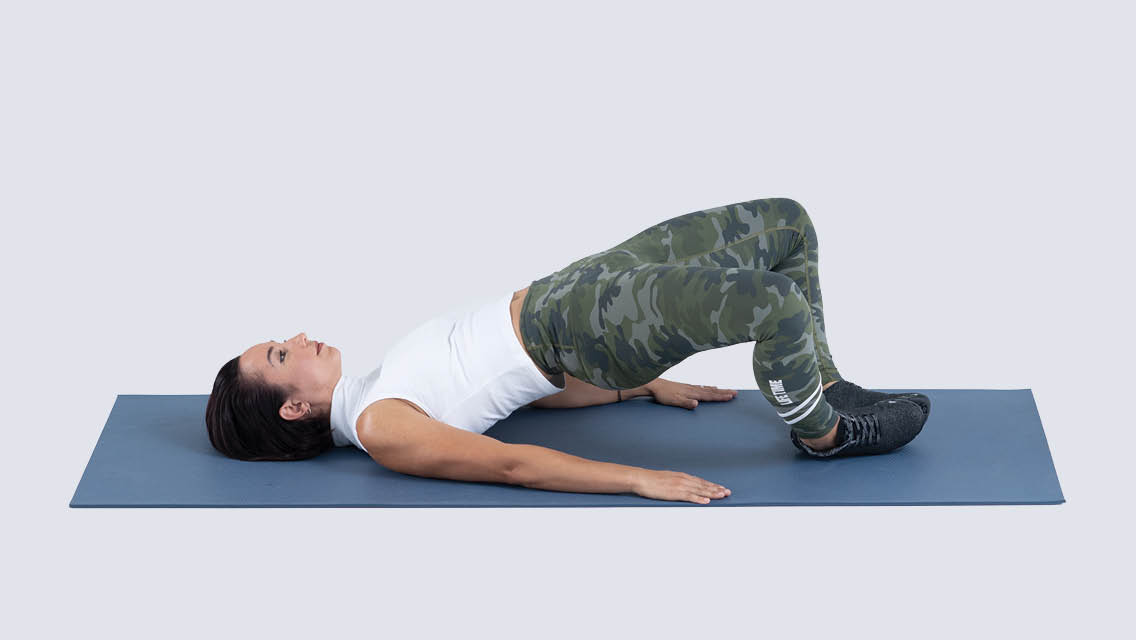
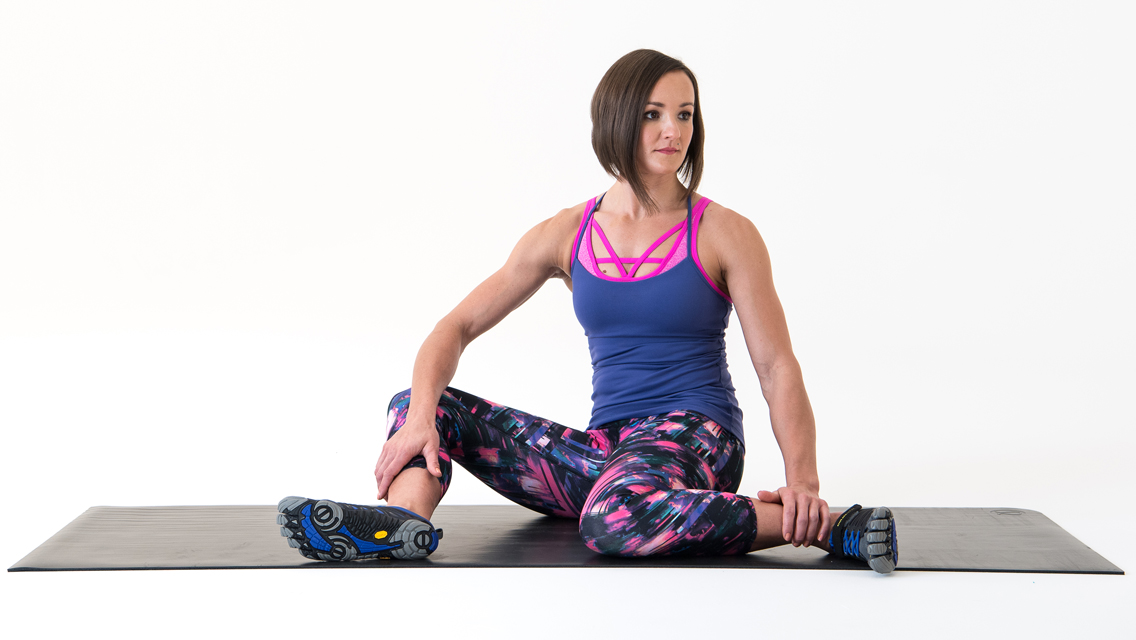
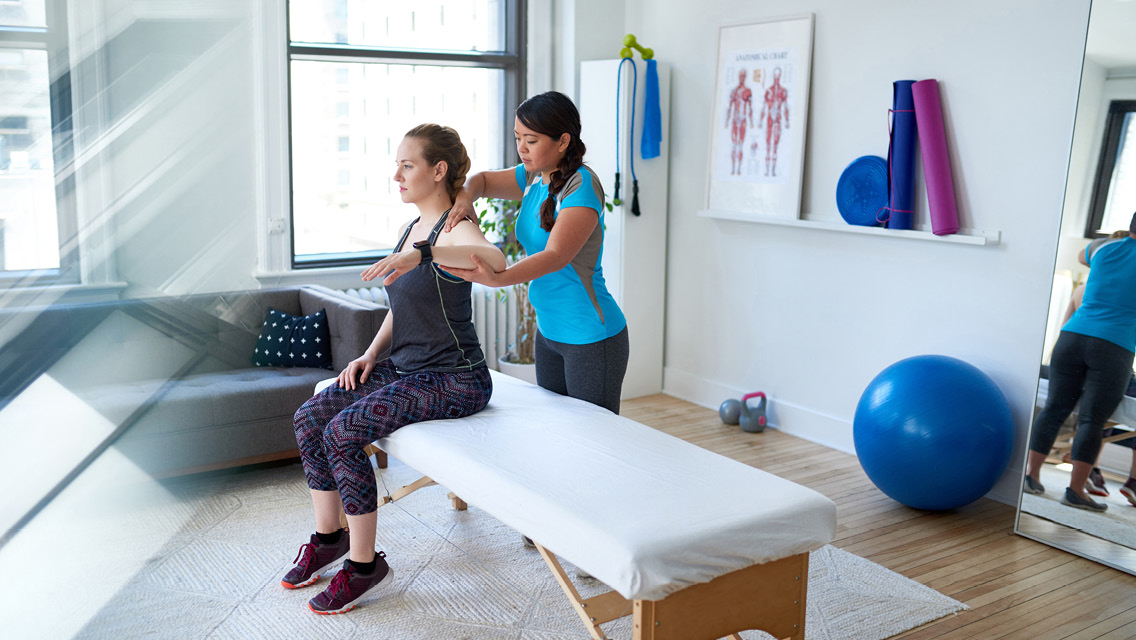
This Post Has 5 Comments
Great tips for us seniors — as we enter into our golden years, staying active is key to obtaining more of those years without medical assistance or dependency on others.
This workout was perfect for me after a year a recovering from abdominal surgeries in addition to giving birth to my beautiful daughter. Standing up and sitting down was something I had to learn again. This is great for me for gaining strength to get up and down — while holding my almost-1-year-old.
This is a very timely article for me. Five years ago, I had a hip replaced and did very well with the physical therapy afterwards. I had a physical job for 35 years and was very strong, but after my hip replacement, I realized that I could not remember how to get down on the floor without a big effort of using my hands and assistive devices. I knew it had to do with strengthening my body, but I had no idea of how to start. Here you give concise and easy-to-follow instructions. Thank you so much.
Thank you for these exercises.
Thanks for the helpful fitness tips and exercises. I’ll have to incorporate them into my routine.